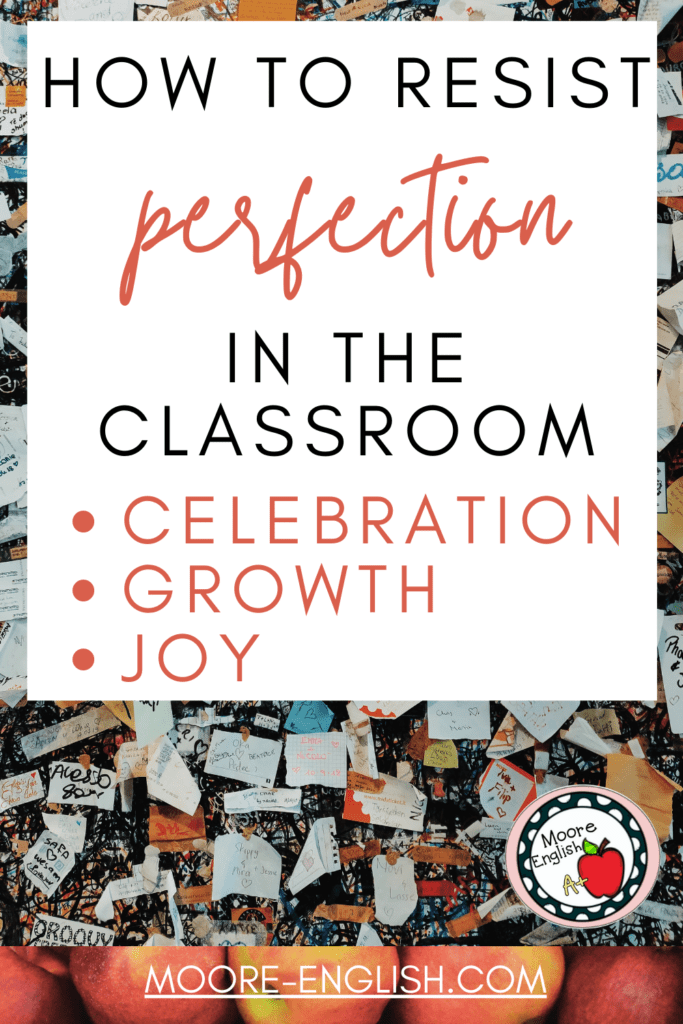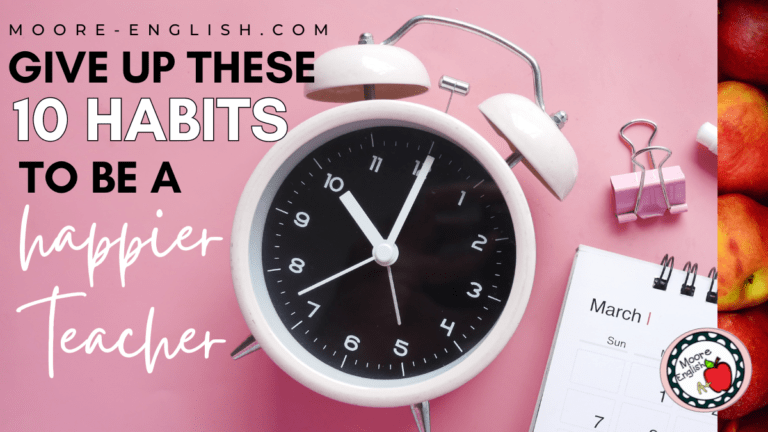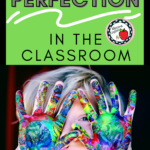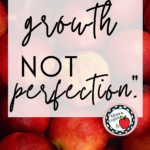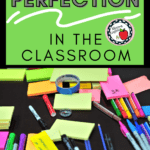I get a lot of email: I read a lot of great teaching blogs, but I have diverse interests. Smithsonian Magazine, Popular Mechanics, and LitHub all have engaging email newsletters.
Last week, National Geographic sent this quotation from photographer Becky Hale: “Resist the urge to capture the perfect. Some of the images I cherish most are from my simple everyday life–my kids looking out of their bedroom windows or returning from the yard covered in mud.”
Hale’s words resonated with me. Humans are often prone to seek perfection. In particular, I know I struggle with perfectionist tendencies, but life is not perfect. Life is messy, and learning is messy too. The classroom should not be a place for seeking perfection, but it should be a place that seeks progress. Here are some ways to resist perfection and emphasize progress in your classroom:
This post this post may contain affiliate links. Please read the Terms of Use.
Practice Vulnerability
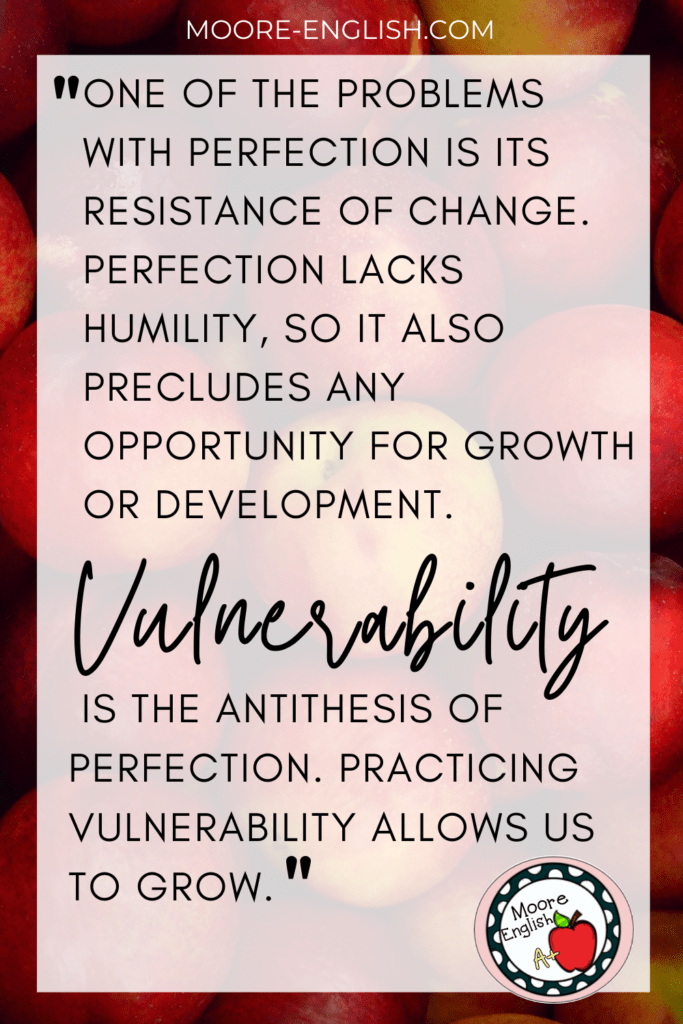
One of the problems with perfection is its resistance of change. Perfection lacks humility, so it also precludes any opportunity for growth or development. Vulnerability is the antithesis of perfection. Practicing vulnerability allows us to grow and to model the process of growth for our peers and for our students.
In the classroom, vulnerability can come from admitting when you are wrong, from taking risks with your pedagogy, and from inviting other professionals to observe your teaching and help you grown. As a bonus, each of these opportunities can also be a great source of classroom inspiration.
Celebrate Growth
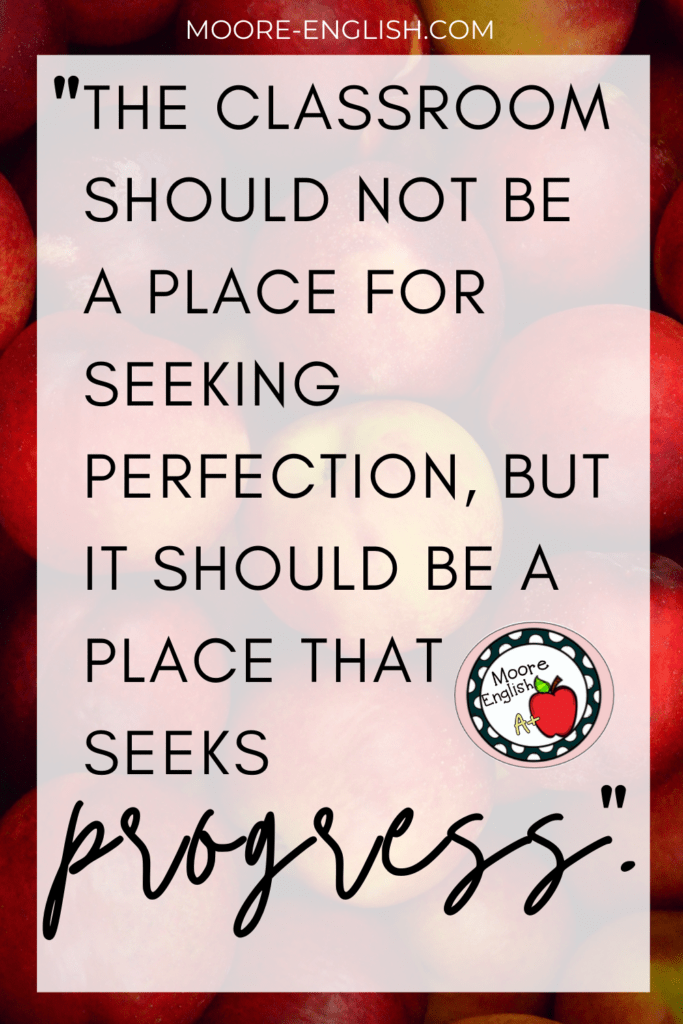
This time of year sees a lot of teachers emphasizing test prep, but standardized testing is all about perfection, not progress. Standardized testing is stressful, but rather than pass that stress on to students, teachers can help students focus on the progress they have made and will continue to make rather than focusing on test scores.
Using student goals and data can be a great way to help students visualize growth. Prior to our state test, I like to visit with students individually to help them see how much growth they have made during the year. With this in mind, I then try to present the state test as an opportunity to show off rather than stress out. My favorite goal sheet is here.
Find Joy to Resist Perfection
As Becky Hale mentioned, some of the most meaningful moments are mundane. For me, these are the source of great joy. When students guide one another, or when students make an unexpected connection with a text, or when students bring a text to life–these are brightest moments in my classroom. However, these are transitory and ephemeral moments, so they can be easily overlooked amidst classroom chaos and test-prep crunch time.
For this reason, teachers have to work to find and emphasize joy over perfection. As teachers we know that every great moment may also be followed by student struggles, so we have to continually remind ourselves to seek joy. Our students are reflections of us, so when we seek joy, so too will our students. When we emphasize progress and growth mindset instead of perfection, so will our students.
How will you resist perfection?

